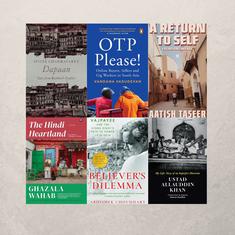Ever since Delhi was declared the world’s most polluted city in 2014, the capital has tried hard to rid itself of that dubious tag. Two years on, it's passed on the title to the Iranian city of Zabol.
However, that doesn't mean Delhi's air is a whole lot cleaner now. It's just that other cities around the world doing worse.
Delhi is still the most polluted megacity in the world, according to the latest World Health Organization report on ambient air pollution observed in more than 3,000 cities around the globe.
Even though the air quality in the city has marginally improved owing to the odd-even experiment over two 15-day phases and other steps taken by the authorities following criticism from the courts, the pollution levels are still severe enough to make people ill.
Still alarming
According to the report, PM 2.5 levels in the capital were 122 and and PM 10 stood at 229. These levels are not substantially lower than the ones mentioned in the 2014 report in which Delhi came out on the top as the world’s most polluted city. The permissible level for PM 2.5 is 60 while it is 100 for PM 10.
Constant exposure to particulates above these levels is known to result in respiratory problems as the minute size of the particles enables them to get embedded deep inside the lungs.
The World Health Organisation pointed out that Delhi has the worst air among megacities with more than 14 million inhabitants. While Delhi's PM 10 levels almost touched 250, cities such as Beijing, Shanghai and Istanbul stayed comfortably below the 150 mark.
“The levels of Delhi’s pollution are still severe so we can’t afford to be complacent,” said Vivek Chattopadhyaya, programme manager of the air pollution control programme at Centre for Science and Environment. “What has come out in this report is merely indicative that there are other cities which are perhaps worse than the ones highlighted in the 2014 report.”
Unreliable readings
The report this year includes 1,400 cities more than the report published in 2014. This implies that some cities which were previously not recording pollution, or remained out of the limelight, are now rising to the top of the charts.
Gwalior, for instance, has replaced Delhi as the most polluted city in the country with an alarming PM 10 reading of 329. However, this doesn’t automatically make it the city with worst air in the country because experts suggest that the data sample might be too small.
According to the report, Gwalior’s air quality was monitored by just two stations compared to 12 in New Delhi. Moreover, none of the stations in Gwalior measured PM 2.5 specifically and the values for the same were derived by doing scientific conversion from the PM 10 values. Experts suggest that this data can only be used to provide general takeaways rather than settle the debate on which city breathes the worst air.
“We need at least three stations to measure air quality in a small city and at least six in a large city to measure the pollution across all areas,” Vivek Chattopadhyaya said. “The readings of just two monitoring stations can’t be relied upon as their figures might be skewed due to local conditions such as population, dust in a particular area, among other factors.”
This is not the case with Gwalior alone. The current report suggests that four Indian cities are among the ten most polluted in the world, but all of them had less than three monitoring stations, and none of these cities except Patna were measuring PM 2.5 at all.
In fact, out of the 122 Indian cities considered for the survey this time around, 97 had only one to three monitoring stations. This is perhaps why it makes sense for the cities to at least install monitoring stations before claiming that their air is clean – a good first step that Delhi has already taken. Without concerted monitoring, generating rankings is not too fruitful as the readings should be reliable and comparable, experts say.
“Probably some of the worst cities that are the most polluted ones in the world are not included in our list, just because they are so bad that they do not even have a good system of monitoring of air quality, so it’s unfair to compare or give a rank,” Maria Neira, head of public health, environmental and social determinants of health, WHO, was quoted as saying by The Hindu.











